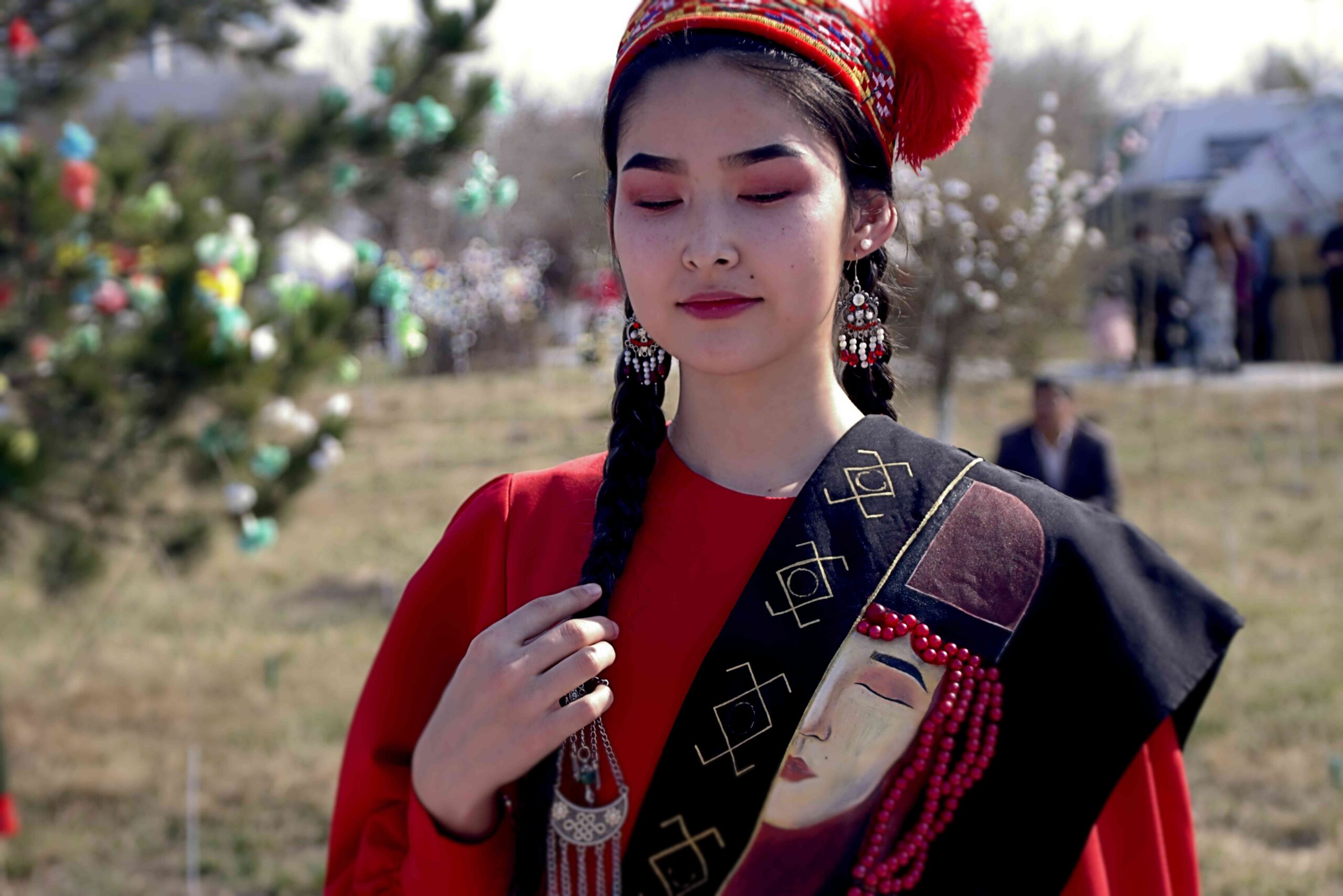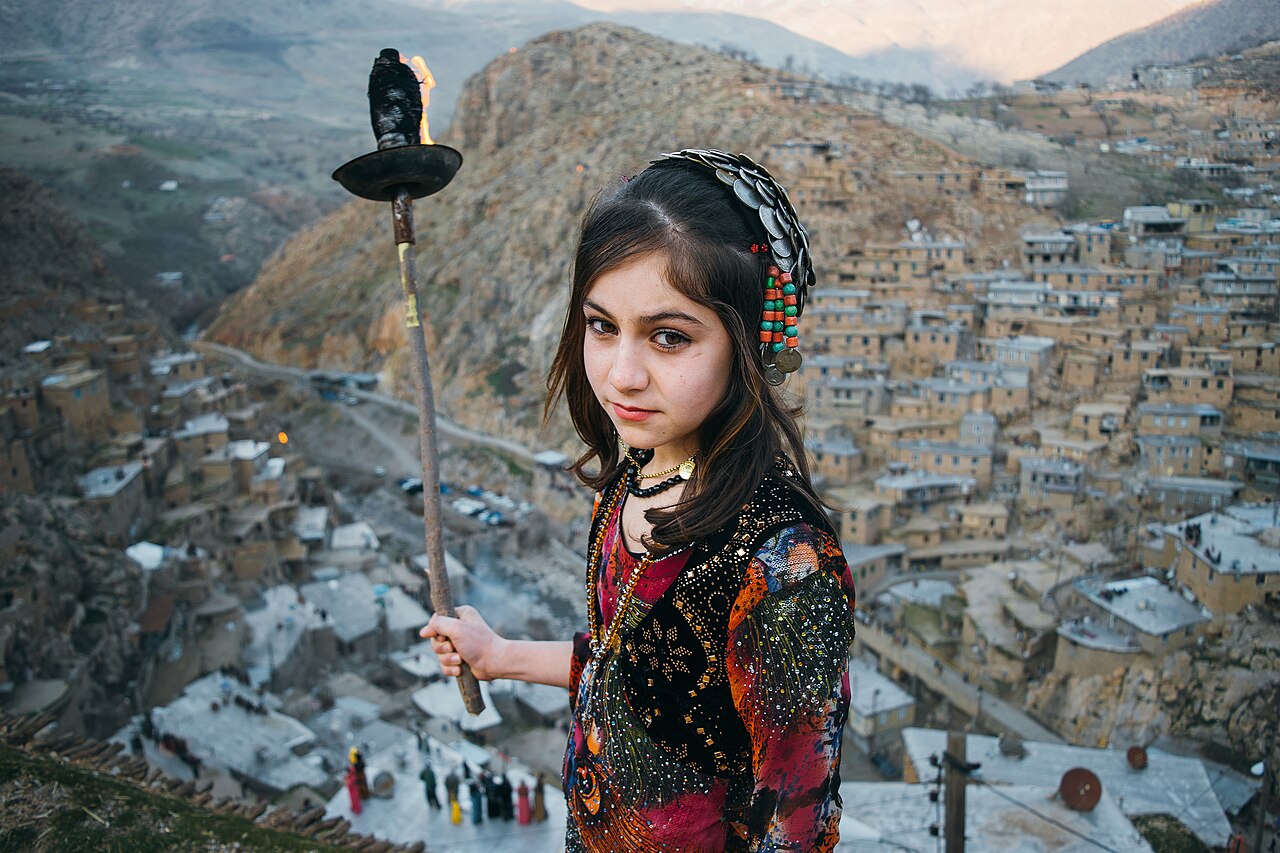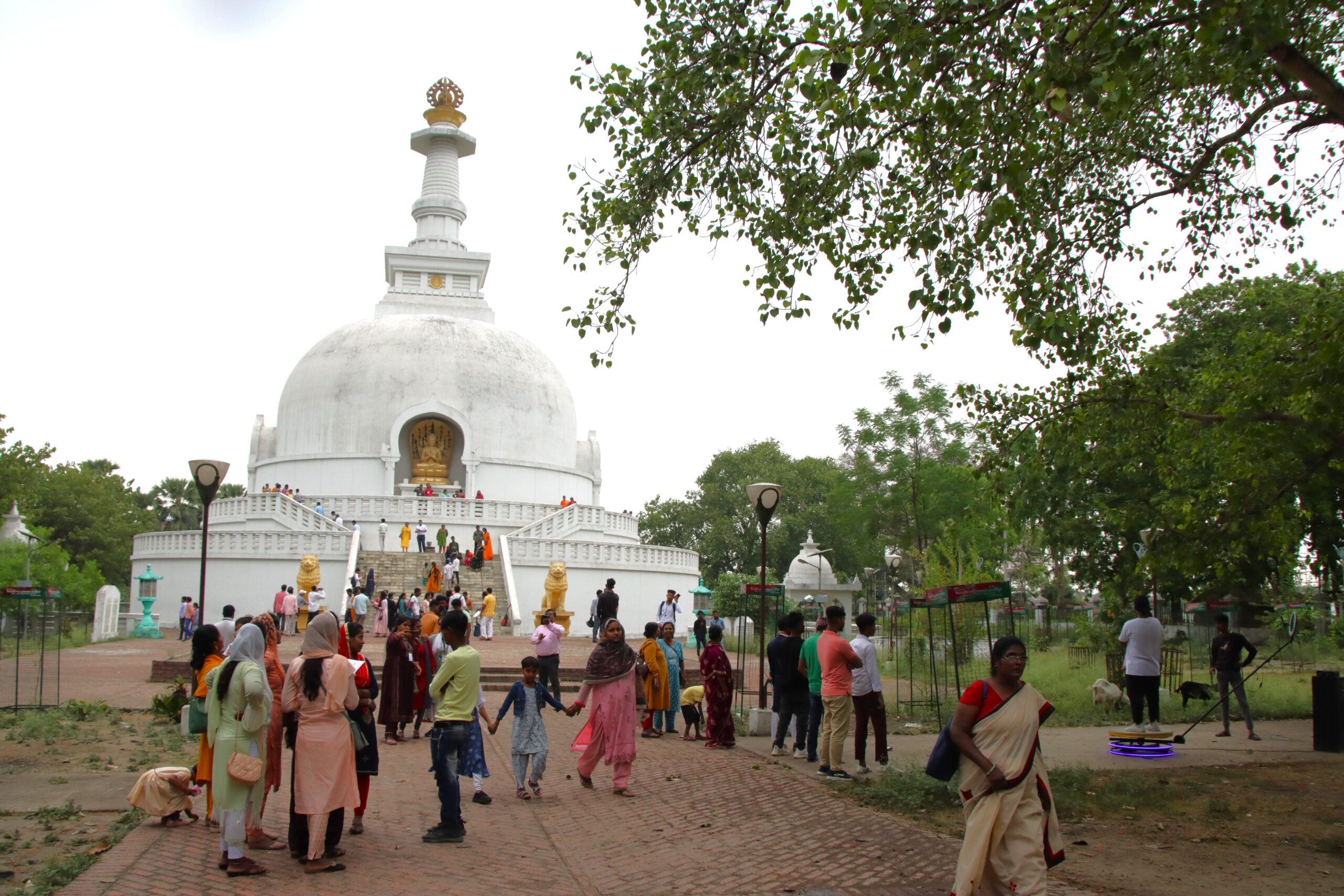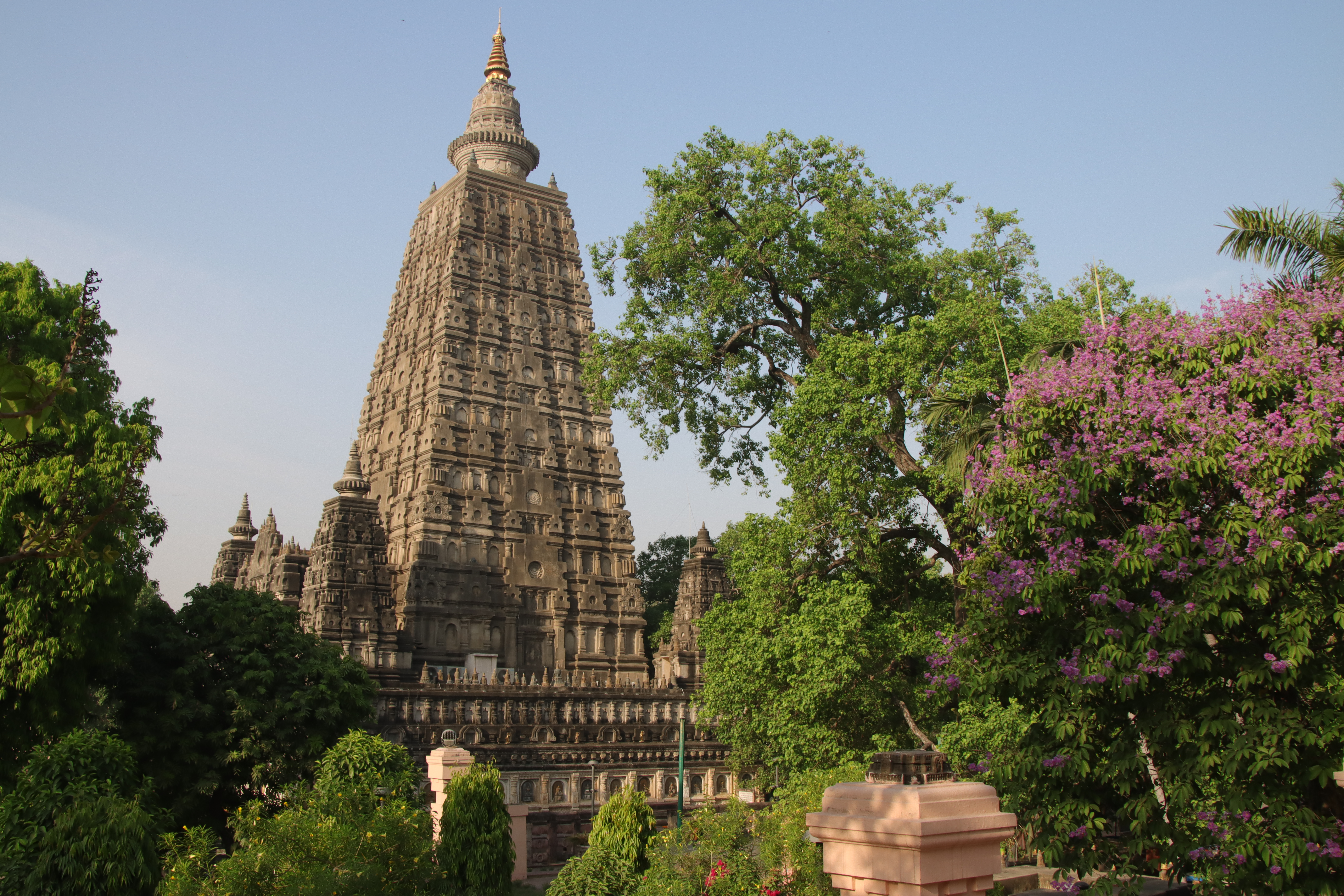A month ago today, I was fortunate enough to accidentally have my travel plans coincide with the biggest festival date in Central Asia. Nowruz, also spelled Nawriz, Navruz, Nawruz, etc. marks the spring equinox, and could be called the Persian New Year. For all the races and lands ever touched by the Persians, the tradition persists in the face of modern astronomical calculations, overlap with Ramadan, and geopolitical division.
Its roots lie in Zoroastrianism, that most ancient of dualistic faiths that spread as the Persians spread, and from Azerbaijan to India, it remains a penciled in time for relaxation, reunion, and renewal. It’s both the start of the new year and the new farming cycle. It’s a time for getting together and celebrating that the long winter is over and that better times are not far ahead.
Because of those simple messages, it has endured for probably thousands of years to gain recognition as UNESCO intangible world heritage—the kind you can’t point out on a city map, but which might actually be more important than the buildings, other sites, and wonders that UNESCO is famous for recognizing.
It’s more important because it’s the lifeblood of the culture belonging to the people who built and sustained the great artifacts—whether the city of Paris or Persepolis—that tourists and travelers alike flock to see.
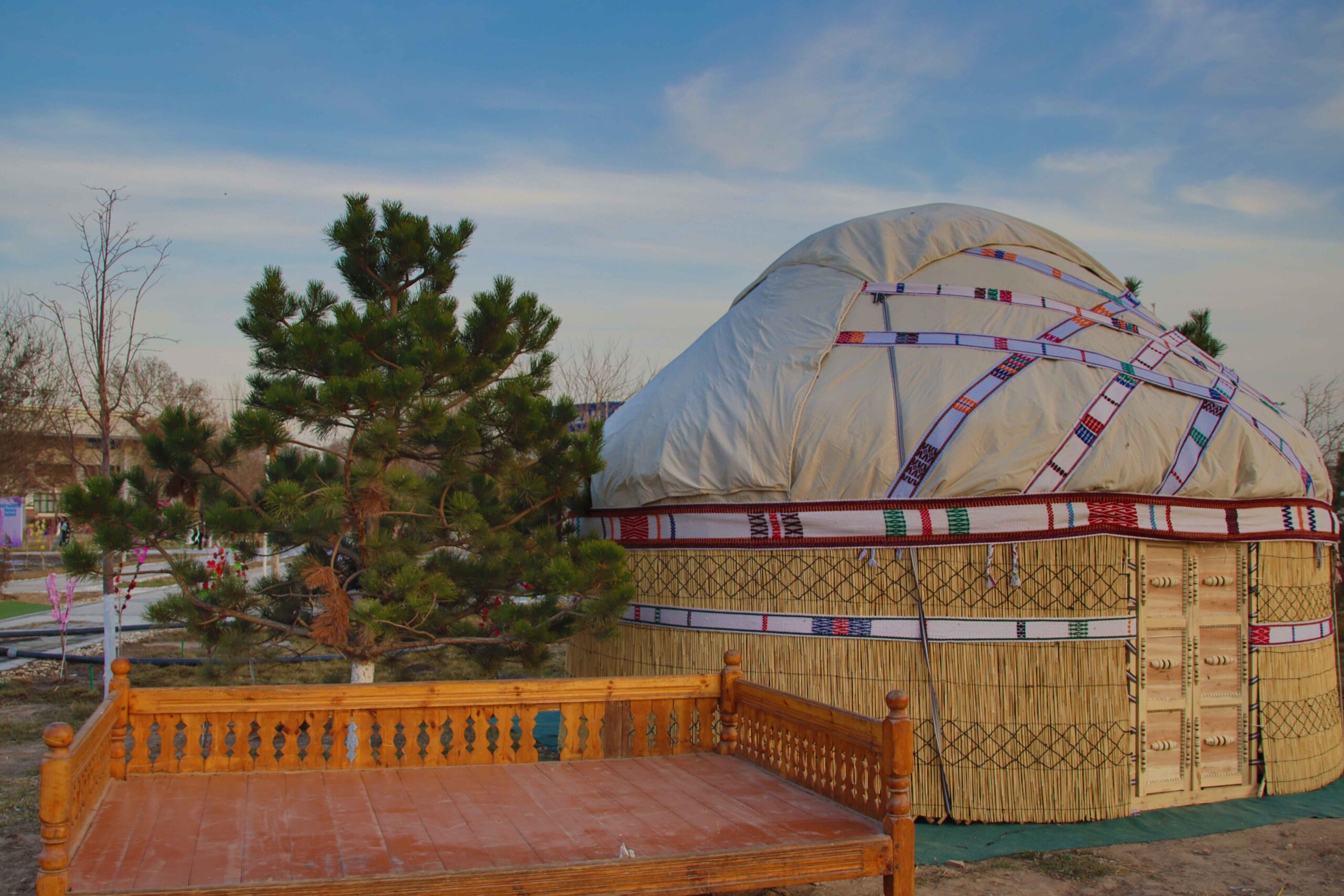
In Karakalpakstan, the westernmost and autonomous region of Uzbekistan, the Nowruz festival is rung in much like it is across the post-Persian world but with its own flavor. Since it’s inhabited by the Karakalpak people, the traditions and ancestry on display are those of the Karakalpaks, a Turkic people of Kazakh-Qipchaq origin who settled on the western shores of the Aral Sea and Aral Delta over the last 500 years.
The capital city of Nukus sits on the once-mighty Amu Darya River, one of two born from glaciers in the Pamir Mountains that run the length of antique region of Transoxiana to feed the Aral Sea. Today it doesn’t arrive at the sea, for the sea is dead and nothing can bring it back.


In the Karakalpak language, Nowruz is spelled Nawriz, and celebrations proceed in a three-day period. Saying for example that the equinox arrives on a Saturday, the preceding Thursday witnesses Nowruz celebrations among colleagues and offices. Employees wear their finest traditional garments, perhaps and very often in concert with their office attire—a red brocade vest and qalpaq hat overtop a black blazer, or a matching set of silver and carnelian earrings and bangles.
Friday sees large celebrations taking part in public places such as parks and plazas, often with spectacles such as dance and musical performances. Once the day of Nowruz arrives, the celebrations are muted to the confines of single homes, or at most neighborhood blocks.

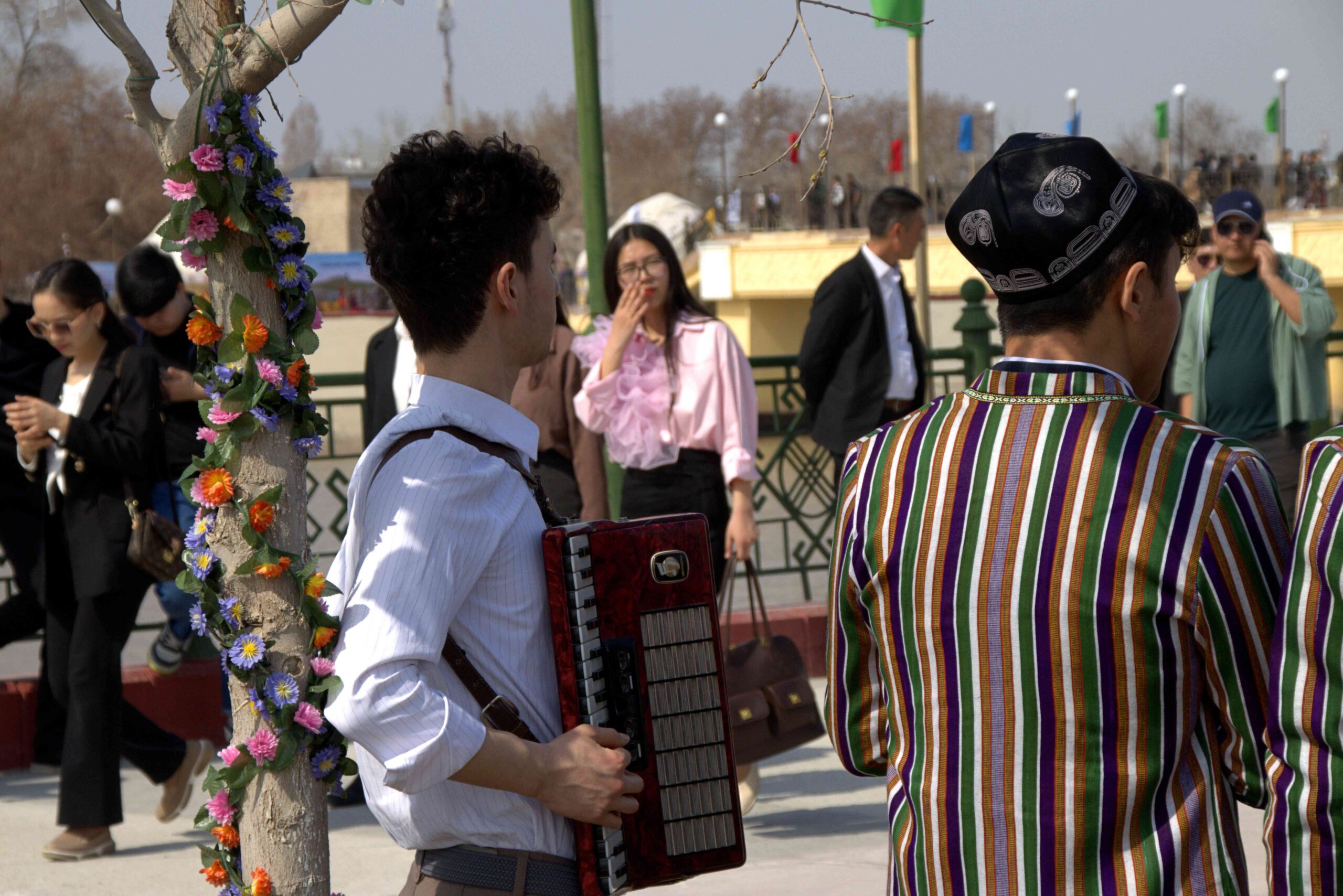
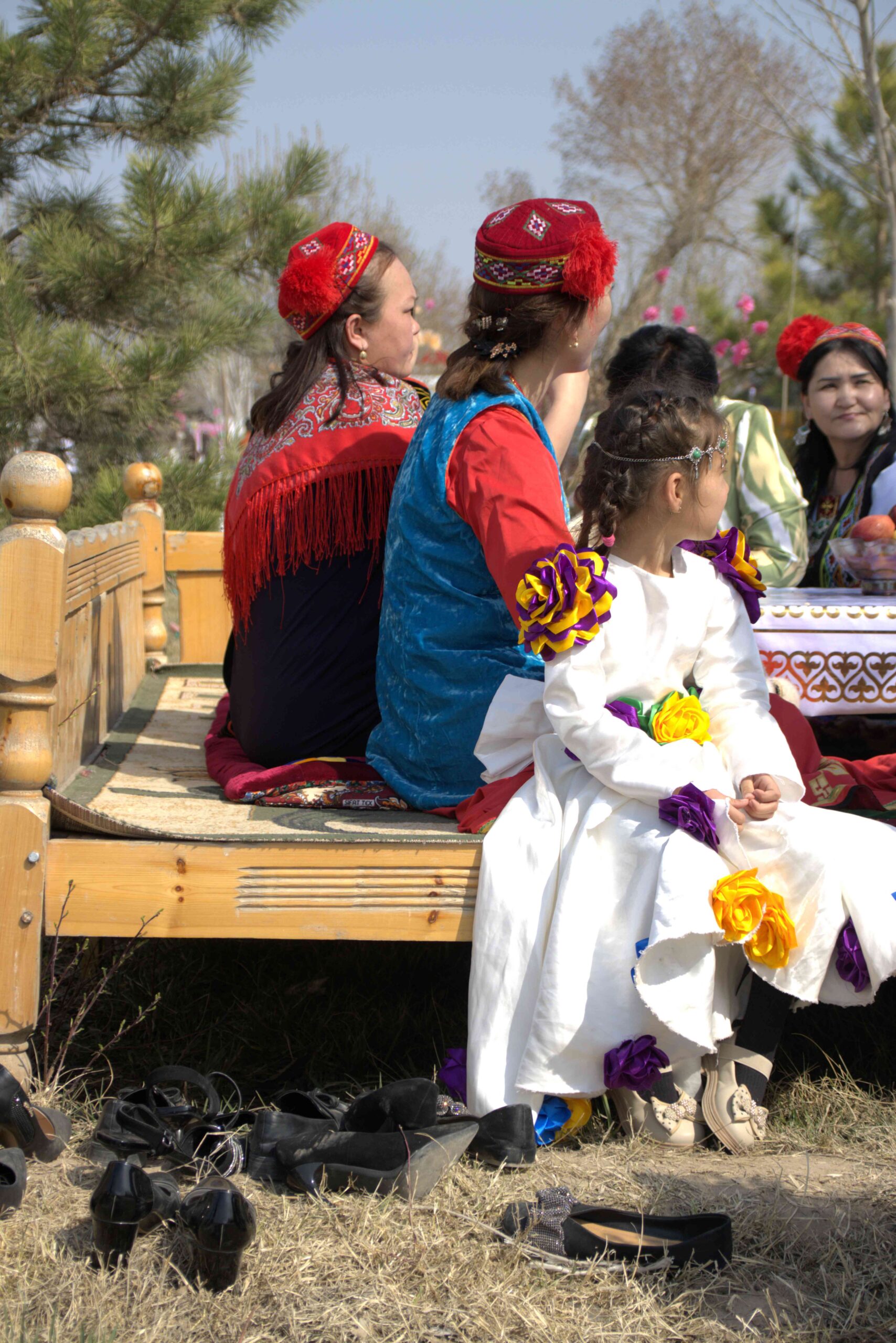
In preparation for Friday’s big celebration, a park running along the Amu Darya River and next to the central bazaar was festooned with decorations. Colors were thickly embroidered into the manicured landscape, and branches that were just two days shy of sprouting spring blooms were tied up with fake ones—tufts of pink, yellow, red, and blue paper or plastic.
Patches of a unique kind of steppe grass were watered down liberally, courtesy of large plastic tubes with one end draped in the whimpering Amu Darya passing just by. A giant swing, such as was described in celebrations in Istanbul by the Italian traveler Pietro Della Valle in the 17th century, is also erected and decorated with vines and flowers. Real flowers, when they can be afforded and apportioned, are arranged in boxes, and the every 20 meters or so is sat a Qara Üy, or “black home”—the nomadic tent of the Karakalpak ancestors.
I pursued the questions of this tent extensively, and confirmed by as many people as I felt were necessary to put the issue to rest, that no one alive today remembers anyone ever using the tent like a home. Considering the age of the eldest I questioned, this puts it at least out of reach of 120 years’ worth of generations, and well-within the realm of complete obscurity in the minds and hearts of the Karakalpaks, much less the Uzbeks, of whom the generational distance was even vaster I discovered.
Today, Qara Üy are fabricated for tourists, or to satisfy the tastes of the wealthiest Karakalpaks, who buy them as a means of displaying social status, but of their use and maintenance, none but those who manufacture their components understand anything, and no one, even the manufacturers, use them in anything resembling a traditional way. In fact, the methods of their manufacture were lost, and had to be more-or-less back engineered by Karakalpaks around the time of Perestroika based on a few that had been kept in Soviet museum collections.


Nowruz is a time of renewal: renewing family bonds, traditional customs and honors, the fields that have lain dormant over winter, and the trees’ flowers and leaves.
Nukus marked the key moment of celebration with a performance born from Soviet times. Though displaying the rich heritage of the Karakalpaks in costume and dance, it was oversaturated with modernity and far too long considering how short each individual number was.
Teams of dancers or other performers (there was even a comedic sketch duo at one point) would take to the stage for what seemed to never be more than 90 seconds, and regardless of how many traditional instruments there were employed in the background music, all percussion was done in a Eurobeat fashion through drum machine. It was clear that none of said traditional instruments were live or hooked up to anything, and were there just to highlight their presence in the dance number thus presented. There were child singing prodigies, and at one point, a giant of a man—a tenor—came out and gave an admirable run of Verdi’s famous La donna è mobile, which was my sign that I had seen enough.
But it cannot be understated that the scope of the dancing and costumes was sumptuous, and of the 4 or 5 numbers that were to be the whole phenomenon’s flagship performances, the mouth could not but open from reactionary impressions.


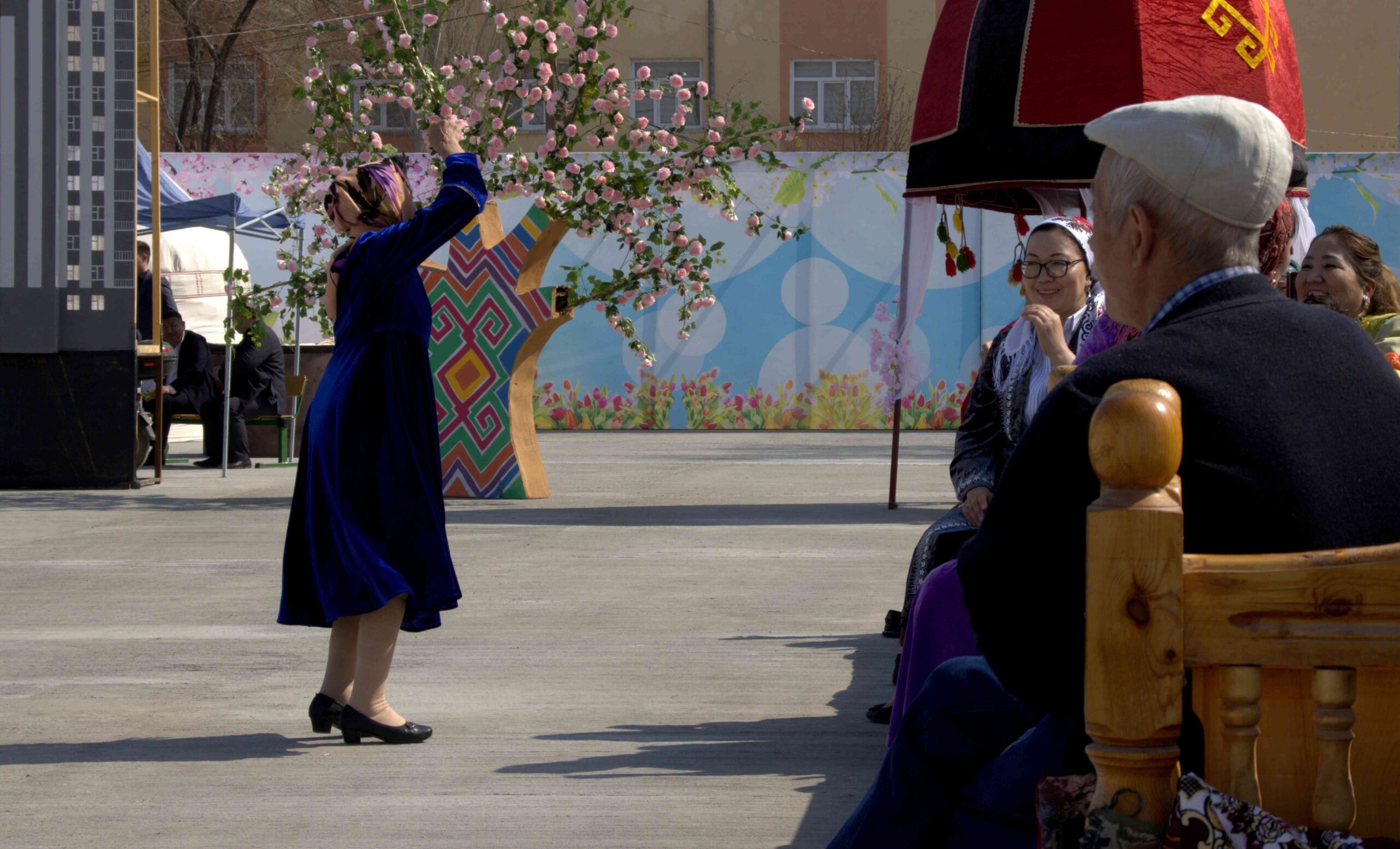
Even after I had observed all there was to observe, which included wrestling and archery contests on the other side of the river, and a full 2 hours after the dignitaries took their seats for the dances, the spectacle yet continued, leaving the impression that it might have been more for highlighting the range of Karakalpak and Uzbek traditional dance to the end that it would gather some kind of international acclaim—perhaps from UNESCO—rather than for artistic merit.
Nevertheless I left deeply impressed by the festivities, and paired with a myriad of other, more intimate settings of celebration, I cannot foresee another trip to Central Asia without planning to be there for Nowruz, as its colors and flavors, whether organized bombastically or with grace and refinery, left me wanting more. WaL

We Humbly Ask For Your Support—Follow the link here to see all the ways, monetary and non-monetary.
PICTURED ABOVE: A young Karakalpak potter in traditional garb allowed me to photograph her in front of her ceramics. PC: Andrew Corbley ©
